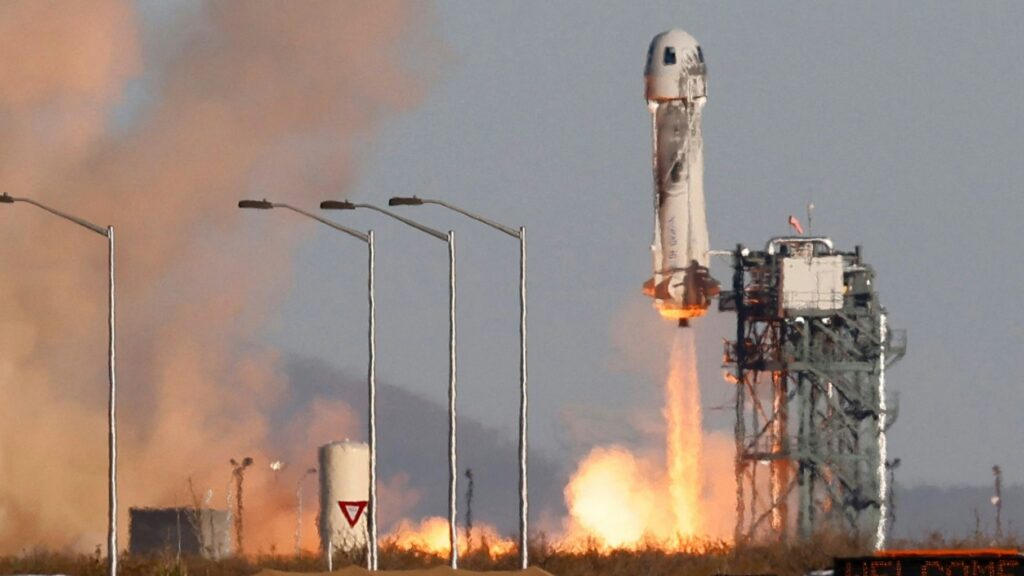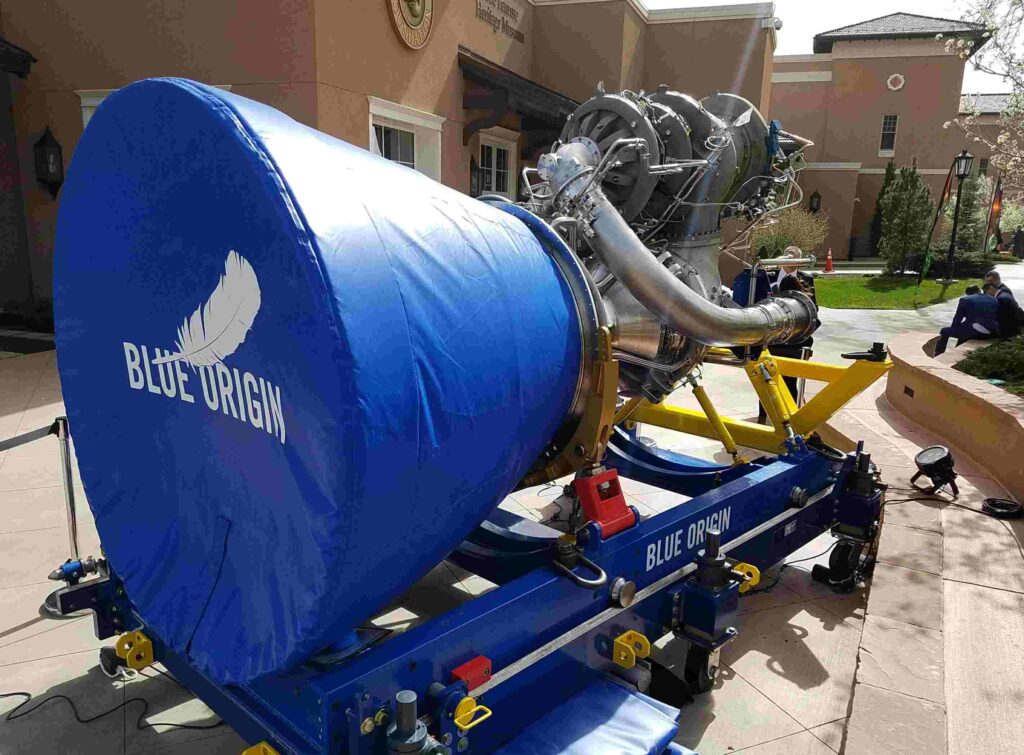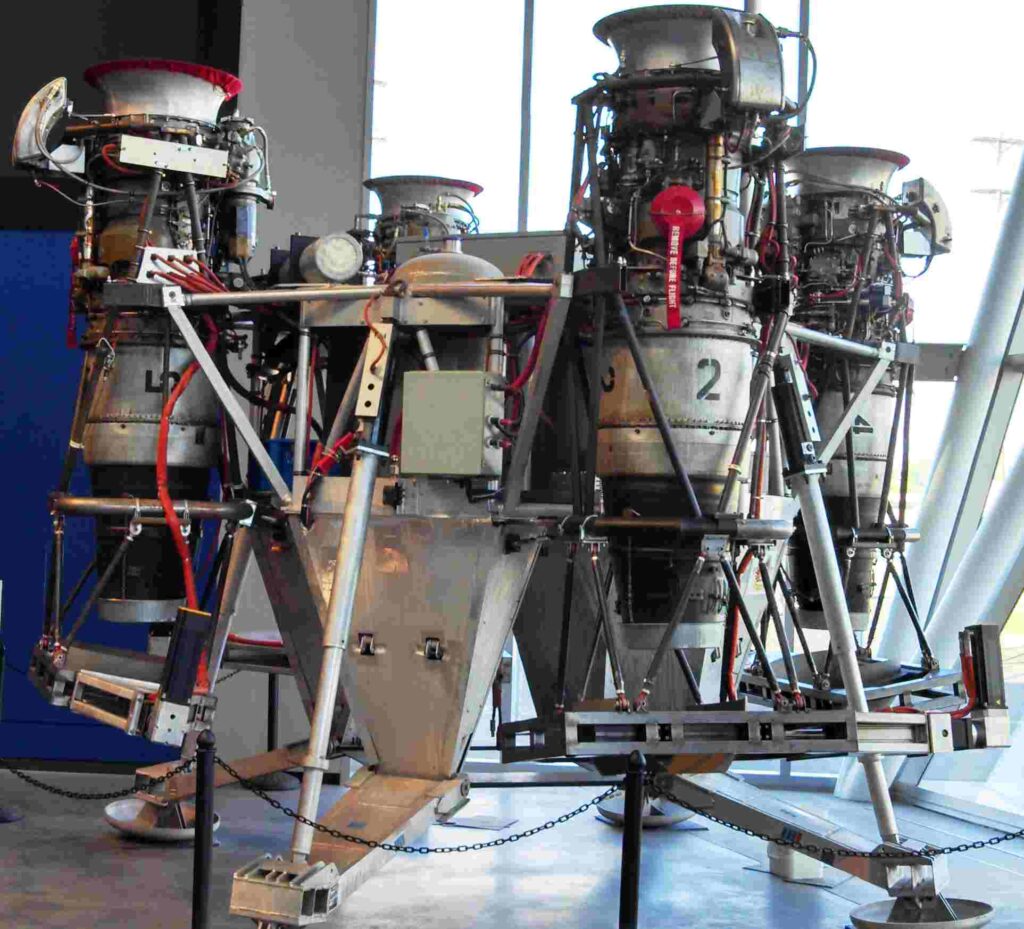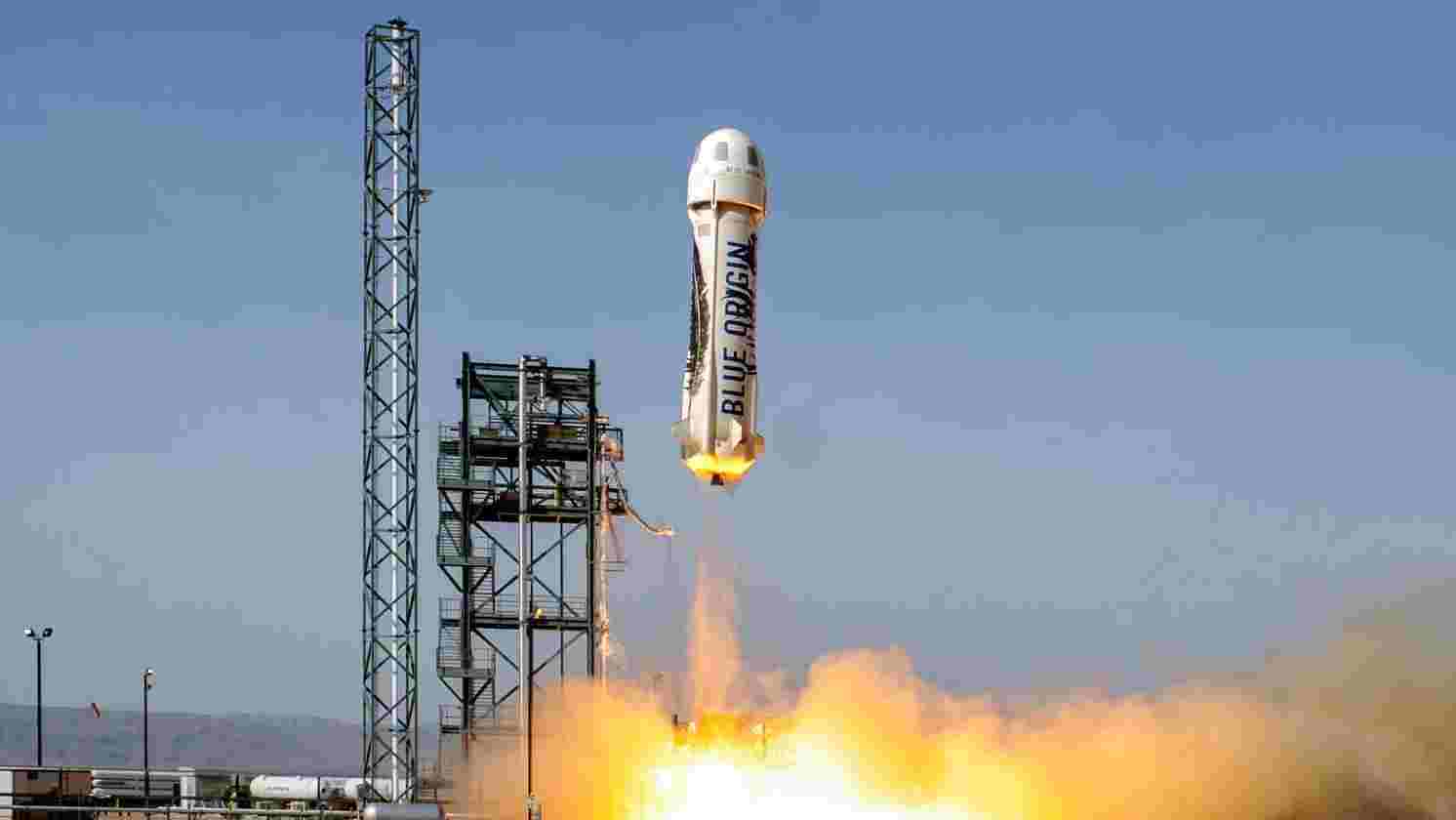The competition within the American lunar program has never been more intense. With NASA’s Artemis III mission approaching, both Blue Origin and SpaceX are pushing their technologies to the limit.
Blue Origin has just revealed its mystery lunar lander upgrade — the Blue Moon Mark 1.5 — designed to challenge SpaceX’s Starship HLS and potentially replace it as the primary human landing system (HLS) for Artemis III.
Meanwhile, SpaceX continues rapid progress on its massive Starship spacecraft, expanding infrastructure and testing engines to prove readiness for upcoming Moon missions.
So the big question is: Can Blue Origin truly compete with SpaceX? Or does Elon Musk’s Starship still hold an unbeatable lead?
Let’s explore every detail behind this high-stakes rivalry in the modern space race.
1. What Is Artemis III and Why It Matters
1.1 The Next Giant Leap for Humanity
The Artemis III mission is a crucial milestone in NASA’s Artemis Program, aiming to return humans to the Moon for the first time since the Apollo 17 mission in 1972.

The goal: land astronauts on the lunar south pole, a region rich in frozen water and potential resources that could support future lunar bases.
Originally, SpaceX was chosen as the sole contractor for the Artemis III Human Landing System (HLS), with its Starship HLS spacecraft leading the mission.
But delays, cost overruns, and technical challenges have raised concerns. As a result, NASA decided to reopen competition to accelerate progress and ensure the U.S. returns to the Moon before China’s lunar program achieves its own crewed landing.
1.2 The Stakes Are Enormous
Why is there so much urgency?
- National prestige: The first country to return humans to the Moon reclaims leadership in deep-space exploration.
- Scientific value: The south pole may hold water ice critical for life support and fuel production.
- Technological progress: Mastering lunar landing systems is key for future Mars missions.
In short, Artemis III isn’t just about planting a flag — it’s about laying the foundation for permanent human presence beyond Earth.
2. SpaceX’s Starship HLS: The Giant to Beat
2.1 The Powerhouse Behind NASA’s Lunar Dreams
SpaceX’s Starship HLS is an advanced variant of the Starship spacecraft, designed to ferry astronauts from lunar orbit to the Moon’s surface and back.
At over 50 meters tall, this massive stainless-steel lander will use Raptor engines, advanced life-support systems, and a pressurized cabin to safely transport crew.
The design allows for heavy payloads and multiple mission profiles, making it ideal for NASA’s long-term Artemis architecture and even future Mars exploration.

2.2 Strengths of Starship HLS
- Unmatched capacity: Can carry crew, cargo, and supplies in quantities far greater than any other proposed lunar lander.
- Reusability: Fully reusable design lowers long-term costs.
- Integration: Works seamlessly with NASA’s Orion spacecraft for lunar orbit docking.
- Experience: SpaceX already has dozens of orbital flight tests behind it, constantly improving its hardware.
2.3 Challenges Facing SpaceX
Despite its ambition, Starship HLS faces several hurdles:
- Orbital refueling must be proven in space — a complex operation never done before.
- The sheer size of the lander makes it challenging to land on uneven lunar terrain.
- Schedule pressure: Every delay pushes Artemis III closer to potential postponement.
Still, SpaceX has shown incredible resilience. The company recently reported over 49 technical milestones completed, including propellant transfer tests and HLS system integration.
Even so, NASA’s renewed competition could change the game — and that’s where Blue Origin enters.
3. Blue Origin’s Lunar Ambition: Enter the Blue Moon Fleet
3.1 The Original Blue Moon Vision
Blue Origin, founded by Jeff Bezos, has long pursued its Blue Moon lander program, a family of spacecraft designed to deliver both cargo and crew to the lunar surface.
The lineup includes:
- Blue Moon Mark 1: a cargo-only version designed to deliver equipment and materials to the Moon.
- Blue Moon Mark 2: a full crewed lunar lander equipped with pressurized cabins and advanced life-support systems.
NASA already selected Blue Origin in 2023 to develop the Mark 2 lander for a future Artemis V mission, awarding a $3.4 billion contract to make it happen.
But Blue Origin wasn’t satisfied waiting until Artemis V — so it unveiled something unexpected: the Blue Moon Mark 1.5.
3.2 The Mystery Lander — Blue Moon Mark 1.5
The Blue Moon Mark 1.5 serves as a bridge between the cargo-only Mark 1 and the crewed Mark 2.
Key features include:
- Crew seating and control panels built into the interior.
- A reinforced airlock for extravehicular activities (EVAs).
- Improved life-support systems for short-duration lunar stays.
- A slightly larger frame than the Mark 1 but smaller (and faster to build) than the Mark 2.
By upgrading an existing design instead of creating a brand-new one, Blue Origin aims to cut development time and demonstrate flight readiness much sooner.

3.3 Strategic Advantage
This move offers several benefits:
- Incremental development: The Mark 1.5 reuses hardware and lessons from the Mark 1 cargo mission.
- Reduced risk: Lower complexity means faster certification and easier integration with NASA’s Orion.
- Practical design: A smaller, lower-profile lander is inherently more stable on uneven lunar surfaces compared to SpaceX’s towering Starship.
It’s a smart play — but not without trade-offs.
4. The Hidden Risks of the Blue Moon Mark 1.5
4.1 A Rushed Response?
Many space analysts see the Mark 1.5 as a reactionary move — created after NASA reopened competition for Artemis III.
While it shows flexibility, the question remains:
Is it an innovative step forward, or a temporary fix to keep Blue Origin relevant?
Because the Mark 1 was never intended to carry humans, modifying it for crewed missions introduces complex engineering challenges, including:
- Pressure control and environmental safety.
- Crew egress systems for lunar surface operations.
- Additional redundancy for life-support and propulsion.
4.2 Timeline Trouble
Another major concern: timing.
To be considered for Artemis III, Blue Origin must build, test, and certify the Mark 1.5 before 2027.
Given that Mark 1 hasn’t yet flown, that’s an incredibly tight schedule. A single failed test or redesign could push everything back months or even years.
4.3 Limited Capability
The Mark 1.5 likely won’t match the payload capacity or endurance of Starship HLS.
It may carry only a small crew for short-duration missions, making it more of a one-off solution than a platform for sustainable lunar operations.
In essence, Blue Origin’s Mark 1.5 could be a short-term win, but not a long-term replacement for SpaceX’s massive Starship ecosystem.

5. SpaceX’s Counterattack: Keeping the Lead
5.1 Non-Stop Starship Progress
When NASA hinted at renewed competition, SpaceX immediately responded with updates proving its momentum.
According to Gwynne Shotwell, SpaceX President, Starship remains on schedule for Artemis III. The company is preparing for its 12th test flight in early 2026, followed by full HLS prototype missions.
Starship’s orbital refueling tests, Raptor engine upgrades, and launch pad expansions are all advancing rapidly at Starbase, Texas.
5.2 Why SpaceX Still Has the Edge
- Experience: SpaceX has launched hundreds of successful Falcon missions and now operates the world’s most reliable reusable rockets.
- Infrastructure: A massive production line for Starship hardware is already operational.
- Momentum: NASA has invested heavily in Starship HLS, making it the central pillar of its lunar strategy.
- Vision: Starship isn’t just for one mission — it’s built for Moon, Mars, and beyond.
Even with Blue Origin’s surprise announcement, SpaceX’s lead remains formidable.
6. Blue Origin’s Challenges Beyond the Lander
6.1 The New Glenn Factor
For Blue Origin’s Blue Moon landers to reach the Moon, the company’s New Glenn rocket must be operational.
While engine testing has shown promise, New Glenn’s maiden launch has been delayed multiple times. Without consistent launch success, even the best lunar lander can’t fly.
6.2 Cost and Resource Pressure
Developing the Mark 1.5, modifying hardware, and securing new certifications will require massive financial investment.
If NASA funding doesn’t fully cover it, Blue Origin may have to use private capital, stretching its long-term budget and slowing other projects.
6.3 Performance Record
After more than two decades in aerospace, Blue Origin has achieved major milestones (like reusable rocket landings with New Shepard) but still lacks orbital flight heritage.
That’s a concern when competing with SpaceX, which has dozens of orbital missions and a proven ability to iterate quickly.
7. Key Comparison: Starship HLS vs. Blue Moon Mark 1.5
| Feature | SpaceX Starship HLS | Blue Origin Blue Moon Mark 1.5 |
|---|---|---|
| Primary Role | Crewed lunar lander for Artemis III | Crewed/cargo hybrid intermediate lander |
| Height | ~50 m | ~15–20 m (estimated) |
| Crew Capacity | Up to 4+ | 2–4 |
| Cargo Capacity | Very high (100 + tons potential) | Moderate |
| Propulsion | Raptor engines (methane/oxygen) | BE-7 engines (hydrogen/oxygen) |
| Architecture | Two-stage reusable system | Single-stage lander |
| Testing Progress | Multiple integrated flights | Prototype in development |
| Risk | Complex refueling and landing stability | Accelerated schedule, limited flight history |
8. NASA’s Role: Balancing Innovation and Reliability
NASA’s dual-provider approach aims to keep both SpaceX and Blue Origin pushing forward.
By funding two landers — one experimental and powerful (Starship HLS) and one conservative and modular (Blue Moon Mark 1.5) — NASA reduces risk and fosters innovation.
However, NASA will ultimately prioritize:
- Safety of astronauts
- Schedule certainty
- Sustainability for future Artemis missions
If Blue Origin can demonstrate rapid progress with the Mark 1.5 while SpaceX continues maturing Starship, the U.S. will be well-positioned to maintain lunar leadership.
9. What the Future Holds for the Lunar Race
9.1 Possible Scenarios
- SpaceX leads Artemis III: Starship HLS completes testing and lands the first Artemis crew.
- Blue Origin steps in: Delays with Starship lead NASA to choose the Mark 1.5 as a backup.
- Dual-provider model: Both landers fly separate missions — ensuring redundancy and competition.
9.2 The Broader Impact
Whichever company wins, this competition is reshaping the entire aerospace landscape.
- More innovation: Competition drives faster development.
- Lower costs: Reusable systems from both companies reduce expenses.
- Global attention: The Moon becomes the center of a new commercial and geopolitical frontier.
10. Final Verdict: Who Wins the Race to the Moon?
After analyzing both programs, here’s the takeaway:
- Blue Origin’s Blue Moon Mark 1.5 is a smart strategic move, giving NASA a backup plan and showing that Bezos’ team can adapt quickly.
- But SpaceX’s Starship HLS remains years ahead in testing, infrastructure, and overall vision.
In the near term, SpaceX likely retains its lead for the first crewed Artemis landing, while Blue Origin prepares to shine in later missions with the Mark 2 version.
In essence:
Blue Origin’s Blue Moon Mark 1.5 may be faster, but SpaceX’s Starship HLS is stronger and more sustainable.
Both companies are crucial for the future of American lunar exploration, ensuring that NASA’s Artemis Program continues to thrive.
FAQs
1. What is Blue Origin’s Blue Moon Mark 1.5 lunar lander?
Blue Origin’s Blue Moon Mark 1.5 is an intermediate lunar lander design between the cargo-only Mark 1 and the future crewed Mark 2. It includes upgraded life-support systems, crew seating, and a reinforced airlock to support short-duration crewed missions to the Moon.
2. Why did Blue Origin develop the Blue Moon Mark 1.5?
The Mark 1.5 was created to speed up Blue Origin’s lunar readiness and compete directly with SpaceX’s Starship HLS. It’s designed as a bridge model, using existing Mark 1 hardware to reduce development time while adding crew capabilities.
3. What is the difference between Blue Moon Mark 1, Mark 1.5, and Mark 2?
- Mark 1: Cargo-only lander for delivering supplies to the lunar surface.
- Mark 1.5: Hybrid version with limited crew capacity, developed faster for Artemis III competition.
- Mark 2: Full-scale crewed lunar lander for future Artemis V missions with enhanced systems and larger payload capacity.
4. How does Blue Origin’s lander compare to SpaceX’s Starship HLS?
SpaceX’s Starship HLS is a massive, reusable lander with far greater cargo and crew capacity, while Blue Origin’s Blue Moon Mark 1.5 is smaller, simpler, and safer for early missions. Starship aims for long-term lunar bases, whereas Mark 1.5 focuses on faster deployment and stability on the lunar surface.
5. Will Blue Origin’s Blue Moon Mark 1.5 be used in Artemis III?
That depends on NASA’s decision. Although SpaceX currently holds the primary contract for Artemis III’s human landing, NASA has reopened competition, allowing Blue Origin’s Mark 1.5 to be evaluated as a potential backup or alternative option.
6. Why did NASA reopen the Artemis III lunar lander competition?
NASA’s acting administrator Sean Duffy decided to reopen competition to ensure schedule reliability and accelerate lunar development, fearing that delays in SpaceX’s Starship program might affect the Artemis III timeline.
7. What engines power Blue Origin’s Blue Moon landers?
Blue Origin’s Blue Moon landers use the BE-7 engine, a hydrogen/oxygen cryogenic engine specifically developed for lunar missions. It provides high efficiency and deep throttling capability, essential for precise lunar landings.
8. When will Blue Origin’s Blue Moon Mark 1.5 launch?
The exact launch date for the Mark 1.5 hasn’t been confirmed. However, Blue Origin aims for a cargo Mark 1 mission by late 2026, with Mark 1.5 testing possibly following soon after if the Artemis III contract is secured.
9. What is SpaceX’s Starship HLS?
Starship HLS (Human Landing System) is a lunar variant of SpaceX’s Starship spacecraft, built to carry astronauts from lunar orbit to the Moon’s surface and back to orbit. It’s part of NASA’s Artemis III mission and represents the most powerful lunar lander ever built.
10. How big is SpaceX’s Starship HLS compared to Blue Origin’s Mark 1.5?
Starship HLS stands about 50 meters tall, while Blue Moon Mark 1.5 is expected to be around 15–20 meters. Starship can carry much more mass but has greater landing complexity, while Blue Origin’s lander is smaller and more stable.
11. Which company has more experience: SpaceX or Blue Origin?
SpaceX currently leads in operational experience. It has launched hundreds of Falcon 9 missions, sent astronauts to the ISS, and performed multiple Starship tests.
Blue Origin, while successful with its New Shepard suborbital flights, is still preparing its first orbital rocket, New Glenn, and its first lunar mission.
12. What rocket will launch Blue Origin’s Blue Moon Mark 1.5?
The Blue Moon landers are expected to launch aboard Blue Origin’s New Glenn rocket, a heavy-lift reusable vehicle designed to carry payloads to orbit and beyond. However, New Glenn must first complete its maiden flight before lunar launches can begin.
13. Is the Blue Moon Mark 1.5 reusable?
Yes, Blue Origin aims to make the Blue Moon series partially reusable, depending on mission profiles. Components like the descent stage and structure may be reused in future lunar missions to lower costs and build sustainability.
14. Could both SpaceX and Blue Origin be used for Artemis missions?
Absolutely. NASA’s long-term strategy is to support multiple lunar lander providers to ensure flexibility, safety, and competition. SpaceX’s Starship may lead Artemis III, while Blue Origin’s Blue Moon Mark 2 or Mark 1.5 could serve later missions or parallel flights.
15. Which company will land astronauts on the Moon first?
If SpaceX stays on schedule, Starship HLS will likely perform the first crewed Artemis III lunar landing. However, if delays occur, Blue Origin’s Blue Moon Mark 1.5 could step in — especially if NASA decides on a dual-provider model to safeguard the mission timeline.
Read More:
- Tesla Cybertruck and Model 3 program manager steps down
- Tesla China rolls out Model Y L V2L adapter, and it’s free for early owners
- Tesla reveals its first Semi customer after launch
- Tesla prepares to expand Giga Texas with new Optimus production plant
- It’s mind-blowing! Elon Musk Drops Big Upgrade on Starship Raptor V4 to Moon Shocked Industry


1 thought on “Blue Origin revealed Mystery Lunar Lander Plan to Replace Starship to the Moon Faster BUT”